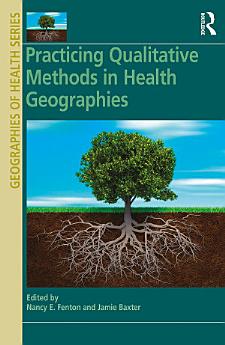Practicing Qualitative Methods in Health Geographies
អំពីសៀវភៅអេឡិចត្រូនិកនេះ
Reflecting these interests, the chapters in this book set out the host of creative qualitative methods being used to explore the psychosocial experiences of individuals more directly, using such traditional methods as in-depth interviews and group discussions, participant observation, diaries and discourse analysis, but also more novel techniques such as 'go-along interviews’, reflexive writing, illustrations, and photographic techniques. There are several areas of qualitative research unique to geographers which figure prominently in this volume including: health and place, comparative case study analysis, and qualitative approaches to the use of geographic information systems (GIS). This collection brings together a wide range of empirical concerns related to questions of health and shines a light on the diversity of qualitative methods in practice. Illustrating how qualitative methodologies are used in diverse health contexts this book fills an important niche for health geographers but will have wide appeal to health and geographic researchers.
ការដាក់ផ្កាយ និងមតិវាយតម្លៃ
អំពីអ្នកនិពន្ធ
Nancy E. Fenton is Adjunct Professor in the School of Public Health and Health Systems at the University of Waterloo, Canada, involved in interdisciplinary qualitative health research investigating the relationship between the environment and health as it relates to risk perception, particularly among children and youth.
Jamie Baxter is Associate Professor in the Department of Geography at Western University, Canada. His research interests include: the social construction of risks from technological hazards, community responses to hazards, environment and health, noxious facility siting and social science research methodology.





